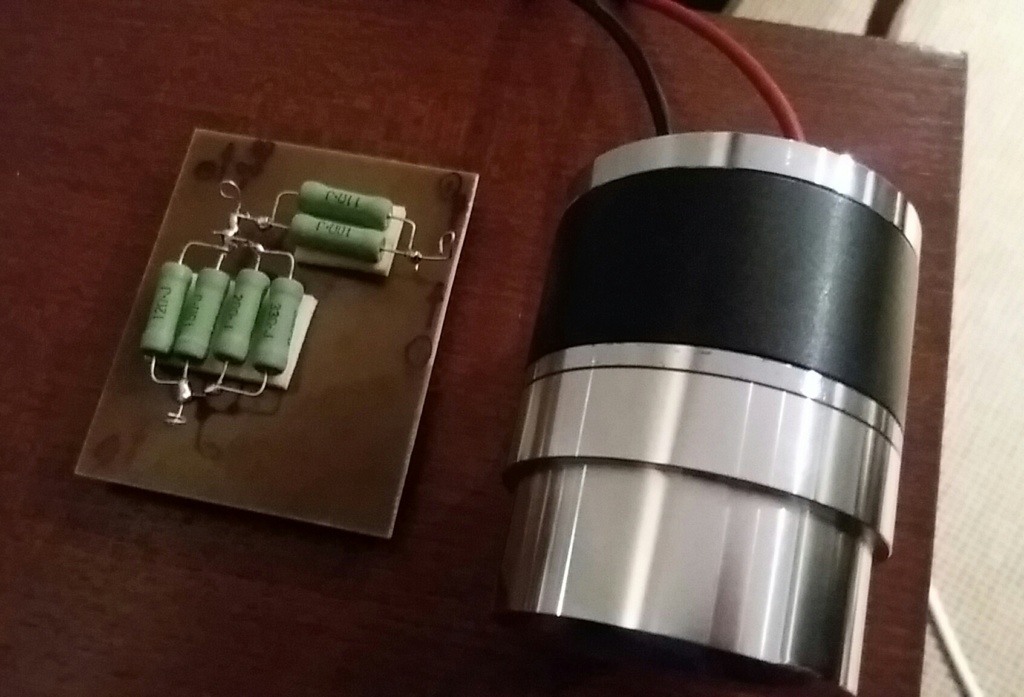Yamaha NS20 y NS30
+2
dequincey
djkoper
6 participantes
Página 3 de 4.
Página 3 de 4. •  1, 2, 3, 4
1, 2, 3, 4 
 Re: Yamaha NS20 y NS30
Re: Yamaha NS20 y NS30
josecoy escribió:Quien dijo miedo?
bueno, no preveo un cataclismo, crees que el montaje y conexion no sera plug and play ?
si se te ocurre algo que yo no he previsto agradecere ideas,
estos eran los tweetrs opcionales de las cajas ns20, mi idea es colocarlos en lugar de los tweeters actuales y ver si mejoro
no he considerado la idea de un atenuador en linea, he pensado conectarlo sin mas
pero por favor comenta si creeis que estoy errado
dequincey- Cantidad de envíos : 84
Localización : bio
Fecha de inscripción : 16/12/2018
 Yamaha NS20 y NS230
Yamaha NS20 y NS230
Estos tweeters me resultan muy aptos, pero más como supertweeters. O sea,, dejar los tweeters originales y añadir estos (de todos modos los que quieres poner no entrarían en le sitio del original).
No hace falta tocar el filtro del tweeter original porque este no va muy alto (teniendo en cuenta el año de fabricación).
Sin embargo, los tweeters que mencionas casi seguro que van con la sensibilidad de aproximadamente unos 105dB. Eso queire decir que hay que atenuarlos para que no chillen. El L-Pad es lo más conveniente (dos resistores, uno en serie y uno en paralelo), ajustando los valores a tu gusto y el oído con prueba y error.
Un saludo,
Dusan.
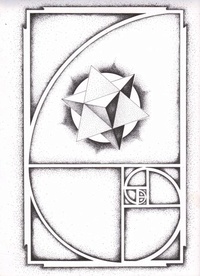
SRBIN100- Cantidad de envíos : 468
Localización : Madrid
Fecha de inscripción : 11/11/2014
 Re: Yamaha NS20 y NS30
Re: Yamaha NS20 y NS30
Si eran opción de esas cajas no creo haya mas problema que quitar y poner...pero ya que las tienes delante mejor que tu no lo sabe nadie.
Si hay que modificar filtros supongo que habrán manuales en la red?
PD:Solo por lo bonitos que son merecen ser puestos.Faltaria el soporte que viene en la foto del folleto pero dudo sea complicado colocarlos aun no teniéndolos...se te ve mañoso.
Hacia tiempo no se veía una caja vintage y encima muy poco vista por aquí...ni por allí...me gusta.
Animo y ha dejarlas como deben
Si hay que modificar filtros supongo que habrán manuales en la red?
PD:Solo por lo bonitos que son merecen ser puestos.Faltaria el soporte que viene en la foto del folleto pero dudo sea complicado colocarlos aun no teniéndolos...se te ve mañoso.
Hacia tiempo no se veía una caja vintage y encima muy poco vista por aquí...ni por allí...me gusta.
Animo y ha dejarlas como deben

josecoy- Cantidad de envíos : 838
Edad : 49
Localización : En un lugar de La Manga
Fecha de inscripción : 21/01/2013
 Re: Yamaha NS20 y NS30
Re: Yamaha NS20 y NS30
SRBIN100 escribió:
Estos tweeters me resultan muy aptos, pero más como supertweeters. O sea,, dejar los tweeters originales y añadir estos (de todos modos los que quieres poner no entrarían en le sitio del original).
No hace falta tocar el filtro del tweeter original porque este no va muy alto (teniendo en cuenta el año de fabricación).
Sin embargo, los tweeters que mencionas casi seguro que van con la sensibilidad de aproximadamente unos 105dB. Eso queire decir que hay que atenuarlos para que no chillen. El L-Pad es lo más conveniente (dos resistores, uno en serie y uno en paralelo), ajustando los valores a tu gusto y el oído con prueba y error.
Un saludo,
Dusan.
Hola Dusan, muchas gracias por tu respuesta
permiteme aprender de lo que comentas
planteas añadirlos al sistema original, OK,.... ya veras que preguntas te hago,...
1- entonces sobre el cableado del tweeter original como irian ? en serie o en paralelo ?
2- por otro lado la sensibilidad es de 115dB/W de acuerdo al triptico que he encontrado por internet:

entonces es coherente la disposicion en L-pad (he mirado un poco en internet para saber lo que es eso)
entonces un L-Pad como lo pondria , a la entrada de este tweeter, sobre el polo negativo, positivo ? y de que valores de resistencias podria probar ? y potencia ? sobre 10W ?
como veras estoy un poco perdido
gracias
dequincey- Cantidad de envíos : 84
Localización : bio
Fecha de inscripción : 16/12/2018
 Re: Yamaha NS20 y NS30
Re: Yamaha NS20 y NS30
josecoy escribió:Si eran opción de esas cajas no creo haya mas problema que quitar y poner...pero ya que las tienes delante mejor que tu no lo sabe nadie.
Si hay que modificar filtros supongo que habrán manuales en la red?
PD:Solo por lo bonitos que son merecen ser puestos.Faltaria el soporte que viene en la foto del folleto pero dudo sea complicado colocarlos aun no teniéndolos...se te ve mañoso.
Hacia tiempo no se veía una caja vintage y encima muy poco vista por aquí...ni por allí...me gusta.
Animo y ha dejarlas como deben
gracias @josecoy
yo no se mucho, la verdad, me he guiado porque eran opcion es cierto, mira aqui en los manuales de los NS20:
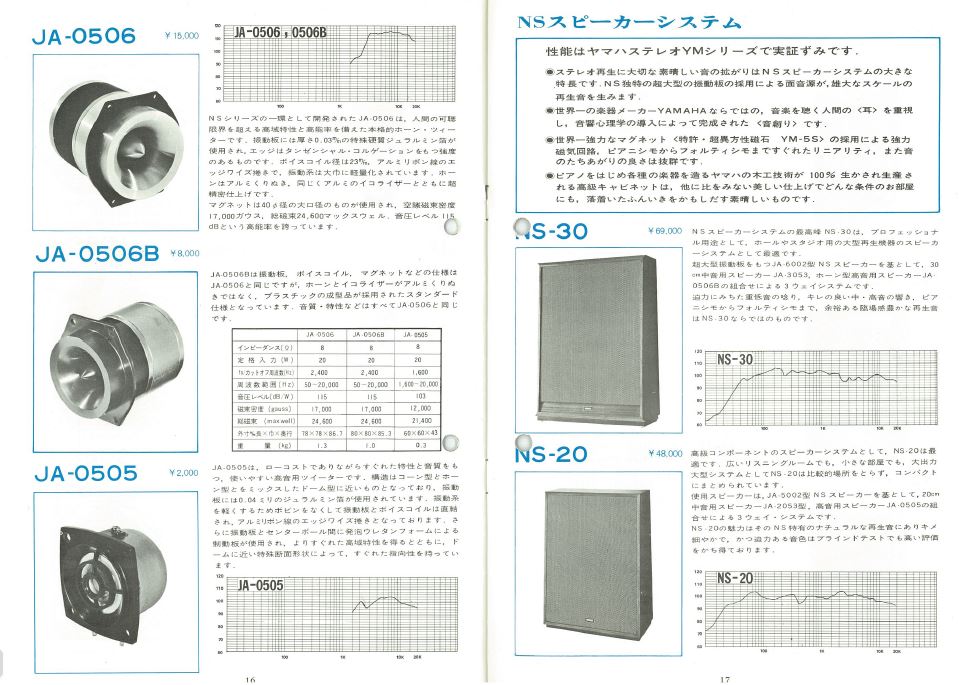
puedes ver los estandard (JA0505) y los dos opcionales, es fascinante que en 1968 poner el tweeter opcional (JA0506) suponia añadir a las cajas (48.000 yenes) otros 15.000 yenes mas, en valor de hoy aquellos precios eran 1600$ para el NS20 y 500$ para el JA0506, y son precios unitarios asi que la broma te salia por 4.200$ equivalentes hoy, una bicoca, vamos,...
sobre la colocacion, bien visto, no tengo los soportes cierto, pero si tengo las peanas asi que he pensado ponerlo sobre la caja sin mas, vease:

dequincey- Cantidad de envíos : 84
Localización : bio
Fecha de inscripción : 16/12/2018
dequincey- Cantidad de envíos : 84
Localización : bio
Fecha de inscripción : 16/12/2018
 Re: Yamaha NS20 y NS30
Re: Yamaha NS20 y NS30
SRBIN100 escribió:
Estos tweeters me resultan muy aptos, pero más como supertweeters. O sea,, dejar los tweeters originales y añadir estos (de todos modos los que quieres poner no entrarían en le sitio del original).
No hace falta tocar el filtro del tweeter original porque este no va muy alto (teniendo en cuenta el año de fabricación).
Sin embargo, los tweeters que mencionas casi seguro que van con la sensibilidad de aproximadamente unos 105dB. Eso queire decir que hay que atenuarlos para que no chillen. El L-Pad es lo más conveniente (dos resistores, uno en serie y uno en paralelo), ajustando los valores a tu gusto y el oído con prueba y error.
Un saludo,
Dusan.
Dusan he encontrado este calculador,
http://www.sengpielaudio.com/calculator-Lpad.htm

me falta un input: ¿ cual debiera ser el rango de atenuacion en dB que debiera buscar para que "no chillen" ?
bajar de 115 a 90 por ejemplo ? o sea atenuar 25dB ?
gracias
Última edición por dequincey el Lun 31 Dic 2018 - 9:33, editado 1 vez
dequincey- Cantidad de envíos : 84
Localización : bio
Fecha de inscripción : 16/12/2018
 L-Pad
L-Pad
Hola.
Primero de decir que la posición tal y como has dicho: Encima de las cajas, me parece correcta porque ayuda a la amplitud de la dispersión.
Es la posición preferida de los Japoneses, pero tambien se puede encontrar en muchos otros altavoces como Tannoy por ej.
Si no tienes las peanas adecuadas no te preocupes. Para empezar, puedes colocar una bolsa de tela llena de garbanzos. Se amoldará perfectamente a la forma cilindrica de los tweeters. Luego, cuando tengas tiempo, puedes hacer una copia de pareja de peanas de madera, como en la foto.
De las curvas que se ven en los manuales de los tweeters, coincíde con lo que te he dicho.
No tocar el filtro original ni el tweeter. Simplemente poner el tweeter JA 0506 encíma de la caja y conectarlo donde los mísmos bornes de las cajas.
Ahora sí, te he dicho que el tweeter JA 0506 necesita un L-Pad, pero también necesita el filtro para cortarlo de bajo (creo que sobre unos 8000Hz sería lo óptimo).
El L-Pad (atenuación) puedes poner justo antes de conexión con el JA 0506 y el equema es el que has encontrado. Hay que tener en cuenta que el calculo a base de estas formulas es teórico pero que en la realidad hay otros factores que influyen y que no hay que esperar que se acierte a la primera.
Primero deberías empezar desde un punto y luego ir cambiando los valores de las resistencias para llegar al ajuste adecuado. Lleva un poco de tiempo pero el resultado merece la pena y es divertido porque descubre la sensibilidad de tu oído.
La atenuacion que mencionas de 25dB podría ser como máximo y el esquema con el filtro de corte a 8000 Hz sería este:

Tambien, te envío otro esquema con la atenuacion de 20dB para que puedas ver como va la proporción de las resistencias al atenuar menos:

Otro esquema con atenuación de 15dB:

En este caso, ya que el tweeter JA 0506 actuaría desde 8000Hz (o sea, como el supertweeter y portaría la "chispa" necesaria para la transparencia y detalle de estas cajas) el rango de frequencias de este driver no se considera crítico y por eso las tolerancias entre los valores de los elementos de filtros pueden ser mayores de 20% (no tienen que ser exactamente lo que pone en el esquema que te he mandado, pero cuanto más cerca mejor).
Lo de las resistencias, tal y como te he dicho: Jugando con varias.
Por último y para que no se me olvíde: Con este tipo de filtro en principio se recomienda invertir la fase (donde se conecta + poner - y en el otro contacto lo mísmo). A mi me ha funcionado así (con la fase revertida) muy bien pero hay excepciónes y hay que probar las dos opciónes.
Espero que esto te va a servir e ayuda.
Un saludo,
Dusan.
Primero de decir que la posición tal y como has dicho: Encima de las cajas, me parece correcta porque ayuda a la amplitud de la dispersión.
Es la posición preferida de los Japoneses, pero tambien se puede encontrar en muchos otros altavoces como Tannoy por ej.
Si no tienes las peanas adecuadas no te preocupes. Para empezar, puedes colocar una bolsa de tela llena de garbanzos. Se amoldará perfectamente a la forma cilindrica de los tweeters. Luego, cuando tengas tiempo, puedes hacer una copia de pareja de peanas de madera, como en la foto.
De las curvas que se ven en los manuales de los tweeters, coincíde con lo que te he dicho.
No tocar el filtro original ni el tweeter. Simplemente poner el tweeter JA 0506 encíma de la caja y conectarlo donde los mísmos bornes de las cajas.
Ahora sí, te he dicho que el tweeter JA 0506 necesita un L-Pad, pero también necesita el filtro para cortarlo de bajo (creo que sobre unos 8000Hz sería lo óptimo).
El L-Pad (atenuación) puedes poner justo antes de conexión con el JA 0506 y el equema es el que has encontrado. Hay que tener en cuenta que el calculo a base de estas formulas es teórico pero que en la realidad hay otros factores que influyen y que no hay que esperar que se acierte a la primera.
Primero deberías empezar desde un punto y luego ir cambiando los valores de las resistencias para llegar al ajuste adecuado. Lleva un poco de tiempo pero el resultado merece la pena y es divertido porque descubre la sensibilidad de tu oído.
La atenuacion que mencionas de 25dB podría ser como máximo y el esquema con el filtro de corte a 8000 Hz sería este:

Tambien, te envío otro esquema con la atenuacion de 20dB para que puedas ver como va la proporción de las resistencias al atenuar menos:

Otro esquema con atenuación de 15dB:

En este caso, ya que el tweeter JA 0506 actuaría desde 8000Hz (o sea, como el supertweeter y portaría la "chispa" necesaria para la transparencia y detalle de estas cajas) el rango de frequencias de este driver no se considera crítico y por eso las tolerancias entre los valores de los elementos de filtros pueden ser mayores de 20% (no tienen que ser exactamente lo que pone en el esquema que te he mandado, pero cuanto más cerca mejor).
Lo de las resistencias, tal y como te he dicho: Jugando con varias.
Por último y para que no se me olvíde: Con este tipo de filtro en principio se recomienda invertir la fase (donde se conecta + poner - y en el otro contacto lo mísmo). A mi me ha funcionado así (con la fase revertida) muy bien pero hay excepciónes y hay que probar las dos opciónes.
Espero que esto te va a servir e ayuda.
Un saludo,
Dusan.

SRBIN100- Cantidad de envíos : 468
Localización : Madrid
Fecha de inscripción : 11/11/2014
 Re: Yamaha NS20 y NS30
Re: Yamaha NS20 y NS30
SRBIN100 escribió:H
wow, muchas gracias,
cuanta informacion ! voy a tener que estudiar...
Última edición por dequincey el Lun 31 Dic 2018 - 9:34, editado 1 vez
dequincey- Cantidad de envíos : 84
Localización : bio
Fecha de inscripción : 16/12/2018
 Re: Yamaha NS20 y NS30
Re: Yamaha NS20 y NS30
SRBIN100 escribió:Hola.
Primero de decir que la posición tal y como has dicho: Encima de las cajas, me parece correcta porque ayuda a la amplitud de la dispersión.
Es la posición preferida de los Japoneses, pero tambien se puede encontrar en muchos otros altavoces como Tannoy por ej.
Si no tienes las peanas adecuadas no te preocupes. Para empezar, puedes colocar una bolsa de tela llena de garbanzos. Se amoldará perfectamente a la forma cilindrica de los tweeters. Luego, cuando tengas tiempo, puedes hacer una copia de pareja de peanas de madera, como en la foto.
De las curvas que se ven en los manuales de los tweeters, coincíde con lo que te he dicho.
No tocar el filtro original ni el tweeter. Simplemente poner el tweeter JA 0506 encíma de la caja y conectarlo donde los mísmos bornes de las cajas.
Ahora sí, te he dicho que el tweeter JA 0506 necesita un L-Pad, pero también necesita el filtro para cortarlo de bajo (creo que sobre unos 8000Hz sería lo óptimo).
El L-Pad (atenuación) puedes poner justo antes de conexión con el JA 0506 y el equema es el que has encontrado. Hay que tener en cuenta que el calculo a base de estas formulas es teórico pero que en la realidad hay otros factores que influyen y que no hay que esperar que se acierte a la primera.
Primero deberías empezar desde un punto y luego ir cambiando los valores de las resistencias para llegar al ajuste adecuado. Lleva un poco de tiempo pero el resultado merece la pena y es divertido porque descubre la sensibilidad de tu oído.
La atenuacion que mencionas de 25dB podría ser como máximo y el esquema con el filtro de corte a 8000 Hz sería este:
Tambien, te envío otro esquema con la atenuacion de 20dB para que puedas ver como va la proporción de las resistencias al atenuar menos:
Otro esquema con atenuación de 15dB:
En este caso, ya que el tweeter JA 0506 actuaría desde 8000Hz (o sea, como el supertweeter y portaría la "chispa" necesaria para la transparencia y detalle de estas cajas) el rango de frequencias de este driver no se considera crítico y por eso las tolerancias entre los valores de los elementos de filtros pueden ser mayores de 20% (no tienen que ser exactamente lo que pone en el esquema que te he mandado, pero cuanto más cerca mejor).
Lo de las resistencias, tal y como te he dicho: Jugando con varias.
Por último y para que no se me olvíde: Con este tipo de filtro en principio se recomienda invertir la fase (donde se conecta + poner - y en el otro contacto lo mísmo). A mi me ha funcionado así (con la fase revertida) muy bien pero hay excepciónes y hay que probar las dos opciónes.
Espero que esto te va a servir e ayuda.
Un saludo,
Dusan.
vale, ahora me pongo con lo que tu me envias,
1- entiendo que propones conectarlo a las bornas grandes de las cajas (o sea al positivo y al negativo) por delante del crossover
2- claro entonces hay que cortar los graves con un condensador y una induccion segun propones: 1,76 uF y 0,23 mH
3 las resistencias para el L-pad entendidas ok
dequincey- Cantidad de envíos : 84
Localización : bio
Fecha de inscripción : 16/12/2018
 Re: Yamaha NS20 y NS30
Re: Yamaha NS20 y NS30
SRBIN100 escribió:
Por último y para que no se me olvíde: Con este tipo de filtro en principio se recomienda invertir la fase (donde se conecta + poner - y en el otro contacto lo mísmo). A mi me ha funcionado así (con la fase revertida) muy bien pero hay excepciónes y hay que probar las dos opciónes.
Espero que esto te va a servir e ayuda.
Un saludo,
Dusan.
ya estoy aqui, entonces seria asi ?

y la reversion de fase justo volteando el tweeter:

Una ultima pregunta, potencia de resistencias y demas sobre los 20W (esa es la potencia del tweeter ) ???
Última edición por dequincey el Lun 31 Dic 2018 - 9:40, editado 2 veces
dequincey- Cantidad de envíos : 84
Localización : bio
Fecha de inscripción : 16/12/2018
 Filtro
Filtro
Hola.
Por si a caso, repetiré:
El filtro que te he envíado es solo y exclusivamente para el supertweeter. O sea, después de conectar los cables a los bornes de las cajas (antes del filtro en el interiór), tal y como pone en el equema, primero se pone un condensador en serie y después viene la bobina en paralelo. Luego, viene en serie una resistencia en serie y después, una resistencia en paralelo. Después, se conecta al supertweeter con la fase revertida.
Así que, veo que has entendido bien el esquema del filtro.
Respecto las resistencias, con 5 Watios es estupendo, si quieres de 10 watios, tambien (20 watios no hace falta).
Hablando de sensibilidad, el tweeter original ya tiene atenuación para encajar con el bajo (lo muestran las resistencias Kiwame que has puesto en el tweeter original). Por lo tanto, lo que manda es la sensibilidad del bajo porque es el que siempre tiene la sensibilidad más baja. No estoy seguro cual es la sensibilidad de este bajo pero no creo que tiene más de 90dB a 8 Ohmios de impendancia nominal. Tu quizas, puedes encontrar este dato y esta sería la sensibilidad a la que esta ajustado el tweeter y el conjunto de este altavoz.
Un saludo.

SRBIN100- Cantidad de envíos : 468
Localización : Madrid
Fecha de inscripción : 11/11/2014
 Filtro
Filtro
O sea, primero pones el condensador, la bobina y las dos resistencias de L-Pad, tal y como pone en el esquema (respetando la fase como que la vas a conectar así, en fase). Luego, antes de conectar solo giras el supertweeter y inviertes los polos conectando los cables al revés al supertweeter.

SRBIN100- Cantidad de envíos : 468
Localización : Madrid
Fecha de inscripción : 11/11/2014
 Re: Yamaha NS20 y NS30
Re: Yamaha NS20 y NS30
SRBIN100 escribió:
Hola.
Por si a caso, repetiré:
El filtro que te he envíado es solo y exclusivamente para el supertweeter. O sea, después de conectar los cables a los bornes de las cajas (antes del filtro en el interiór), tal y como pone en el equema, primero se pone un condensador en serie y después viene la bobina en paralelo. Luego, viene en serie una resistencia en serie y después, una resistencia en paralelo. Después, se conecta al supertweeter con la fase revertida.
Así que, veo que has entendido bien el esquema del filtro.
Respecto las resistencias, con 5 Watios es estupendo, si quieres de 10 watios, tambien (20 watios no hace falta).
Hablando de sensibilidad, el tweeter original ya tiene atenuación para encajar con el bajo (lo muestran las resistencias Kiwame que has puesto en el tweeter original). Por lo tanto, lo que manda es la sensibilidad del bajo porque es el que siempre tiene la sensibilidad más baja. No estoy seguro cual es la sensibilidad de este bajo pero no creo que tiene más de 90dB a 8 Ohmios de impendancia nominal. Tu quizas, puedes encontrar este dato y esta sería la sensibilidad a la que esta ajustado el tweeter y el conjunto de este altavoz.
Un saludo.
muchas gracias por ayudarme y por tu paciencia tambien , :-)
si, creo que lo he pillado, este circuito solo para el supertweeter
el bajo parece que tendria 92dB/W, entonces la diferencia entre ambos serian 115-92= 23dB (el JA5004 no es el mio pero no encuentro datos del mio JA5002)
he leido por ahi que se suele atenuar en el entorno de la mitad del “sensitivity gap” asi que el valor maximo de juego serian 12dB
estaba pensando coger resistencias para jugar con -3, -9, -12, -15 dB
por otro lado he encontrado un condensador de 1,8uF y una induccion de 0,22mH que se ajustan bastante bien a lo que has calculado
gracias de nuevo
dequincey- Cantidad de envíos : 84
Localización : bio
Fecha de inscripción : 16/12/2018
 Re: Yamaha NS20 y NS30
Re: Yamaha NS20 y NS30
SRBIN100 escribió:
O sea, primero pones el condensador, la bobina y las dos resistencias de L-Pad, tal y como pone en el esquema (respetando la fase como que la vas a conectar así, en fase). Luego, antes de conectar solo giras el supertweeter y inviertes los polos conectando los cables al revés al supertweeter.
entendido, perfecto,
por cierto he encontrado esto en un blog de un japones, confirma eficiencia de 92dB
This is the data about JA-5002
Voice coil 66mm dia alminium edge wound voice coil
Alnico magnet
impeadance 8 ohm
f0 : 35Hz
efficiensy : 92dB/w/m
f-range : 35Hz~6kHz
size : W500×H680×D110(mm)
dequincey- Cantidad de envíos : 84
Localización : bio
Fecha de inscripción : 16/12/2018
 Re: Yamaha NS20 y NS30
Re: Yamaha NS20 y NS30
Hola compañeros,
Yo tengo unas ns230 en excelente estado. Van muy bien con válvulas. No me he podido leer todos los posts, estos altavoces estaban diseñados para órganos yamaha de los 70, amplificaciones de pocos watt y en muchos casos válvulas, de ahi su alta sensibilidad. Son muy apreciadas en eeuu y japón por su naturalidad y se suelen marcar como especialmente buenas para voces.
Lamentablemente las compré y apenas las he podido disfrutar, (la paternidad...).
Un saludo
Yo tengo unas ns230 en excelente estado. Van muy bien con válvulas. No me he podido leer todos los posts, estos altavoces estaban diseñados para órganos yamaha de los 70, amplificaciones de pocos watt y en muchos casos válvulas, de ahi su alta sensibilidad. Son muy apreciadas en eeuu y japón por su naturalidad y se suelen marcar como especialmente buenas para voces.
Lamentablemente las compré y apenas las he podido disfrutar, (la paternidad...).
Un saludo
bilbo-78- Cantidad de envíos : 189
Localización : Bilbao
Fecha de inscripción : 17/01/2014
 Re: Yamaha NS20 y NS30
Re: Yamaha NS20 y NS30
bilbo-78 escribió:Hola compañeros,
Yo tengo unas ns230 en excelente estado. Van muy bien con válvulas. No me he podido leer todos los posts, estos altavoces estaban diseñados para órganos yamaha de los 70, amplificaciones de pocos watt y en muchos casos válvulas, de ahi su alta sensibilidad. Son muy apreciadas en eeuu y japón por su naturalidad y se suelen marcar como especialmente buenas para voces.
Lamentablemente las compré y apenas las he podido disfrutar, (la paternidad...).
Un saludo
hola bilbaino, que casualidad !
has leido mi renovacion de las ns230 ? te dejo el hilo
https://www.audioplanet.biz/t100982-yamaha-ns230-renovacion
si que son estupendas, saludos
dequincey- Cantidad de envíos : 84
Localización : bio
Fecha de inscripción : 16/12/2018
 Re: Yamaha NS20 y NS30
Re: Yamaha NS20 y NS30
interesante exposicion de un señor en japolandia, la traduccion es un poco encorsetada, pero vale, las fotos no salen, os pongo tb el link:
■ The efficiency is abnormally high.
The sound pressure level of the NS speaker is surprisingly high efficiency, about 100 db as a carefree.
Compared with the fact that many of the modern speakers are in the range of 80 db to good 90 db, the difference more than 10 db actually.
Efficiency difference of 10 db is 10 times when converted to amplifier output. The fact that the sound of sounding a 100 db speaker with 10 W amplifier output and the 90 db speaker sounded at 100 W amplifier output are the same size is nothing but a surprise.
Actually, switching and listening with the modern speaker with the speaker selector, you can hear the power as if it were just by the difference in sound pressure. (In order to compare accurately, it is necessary to reset the volume by 1/4 turn.)
High sound pressure means that the dynamic range is wide. It is an ideal characteristic for classical music, JAZZ, etc. It is a beauty point that it ranges richly without choosing an amplifier from small sounds to loud sounds.
By the way, why is there such a difference ...
For modern speakers to correspond to the high power output of the amplifier, it is natural that the input withstand 100 W or more even with a small speaker of about 10 cm, for this purpose it is necessary to strengthen the vibrating part with a strong damper and tighten against large input It is also aimed to suppress distortion to the minimum. Furthermore, in order to emphasize the bass that is difficult to reproduce with a small speaker, it is necessary to lower the sound pressure in the middle and high frequency range relatively, so we intentionally sacrifice efficiency.
On the other hand, since the amplifier of the NS speaker's era was a high output type, even 20 to 30 W was required, it seems that a high-efficiency, high-efficiency speaker was required. Among those speakers at the time, the high efficiency of the NS speaker which has a large size mechanism and a unique mechanism and can produce abundant bass sounds seems to be different.
However, if the efficiency is 10 times as much as the amp output conversion, the speaker has evolved but it has degenerated ....
Many of the speakers that held down the efficiency seem to aim for sophisticated sounds.
I think that the sound of a highly efficient speaker aimed at sounding at a high rate.
Clearly how it sounds different from modern speakers. If preference is divided, I think this part first.
■ Wave area is wide.
Modern loudspeakers are downsized, and even those with expensive speakers are fewer than 20 cm.
There are many reasons, but NS speakers are super large, just as to say no such relationship.
There is a problem of the place to be located in our house, we are hesitant to obtain large products, but large sized machines such as NS - 30 and NS - 370 will be larger than 1 m in size, so it is difficult to pair with necessary translation.
However, the richness unique to large speakers should be inferred. The area and volume of sound are completely different.
ns - 370.jpg
(It is too big to put in a household just a dignified NS - 370 ....)
Although I saw it at the auction, I gave up on getting it without a storage place.
For example, it is something like the difference between the wind of a large fan that rotates slowly and the wind of a small electric fan that turns small feathers at high speed, and it is quite indispensable if it is asked which is comfortable.
In fact, " loudness " is different between large speakers and small speakers.
A small speaker sounds noisy as the volume is raised, but a big speaker feels noisy even with loud sounds. Especially, in the case of NS speakers with large diaphragm area, you can feel clearly. It is said that it is not tired even if listening for a long time.
Stereo playback is made up of spatial synthesis of L and R point sound sources, but nothing is good with a small speaker as it is a point sound source. (Of course, there are various stereotypes, phase problems, etc. Depending on factors such as the size of the room, the distance between the speakers, it is impossible to say what is good, but the part which compared to a fan etc. is sensuously "big It is a part of "It is a BIG size speaker like the above NS - 370, just imagine that the room is full of sound, will not it snag?
The reason why modern speakers became miniaturized is that in addition to the user's housing circumstances, high-end audio is no longer sold, and various restrictions such as manufacturing cost and design problems (although others may be) If it says that it became crippled, it would be overwhelming, but I think that it is a lonely thing that a rich sound with a rich size will be unavailable unless it has to color the old model of a good old age.
■ Harmonic distortion if ordinary speaker, harmonic overtone if NS speaker.
As the size of the size is the feature of this speaker, the NS speaker seems to be a woofer that plays a lot of bass from its size, but it is surprisingly close to the full range.
Moreover, the midrange treble including the clear overtone is the true bone of this speaker.
So, why does this huge size give me mid to high trees?
A normal speaker has a free edge structure, and a sound comes out by the piston motion of a cone paper floating in the air .
In that case, it is required that the entire cone paper move in a piston motion, so that it does not bend, lightness is also required not to disturb fast movements, and speakers adopting carbon also appeared.
Still, I can not develop an ideal speaker that makes exact piston motion of the entire large diaphragm floating in the air, eventually, in order to reduce the mass of the diaphragm, it must be a small caliber speaker ... It means that it was cozy and small.
It seems that the bass shortage with a small caliber has arrived at the idea of "manage with a box" "can handle with high power". Modern loudspeakers are basically contained in a bass reinforcement box called the bass reflex system, and designed to give a boosted bass range for the apparent size.
On the other hand, the NS speaker is so designed that its diaphragm has a large mass and is completely ignoring the proposition "not to bend, lightly .." However, that was the biggest feature of this speaker, I dare to acquire a soundable diaphragm with a design based on the reverse idea approach of "actively deflecting" .
That is, the mechanism that vibrates from the center (voice coil part) of the diaphragm by aggressively bending the vibration up to the outer peripheral part of the fixed diaphragm according to the frequency (bending motion) .
It is designed to increase the frequency up to middle and high range even if it is huge size while changing the vibration area and vibration part depending on the frequency while securing the low range with the physical size.
(Actually, you can see well that the bass is ringing in the diaphragm as a whole and the mid to high frequencies are ringing near the center cap.
Not to say split vibration, it is a feeling that we should say even as a gradation vibration as an image. )
The phenomenon in which the diaphragm floating in the general air is distorted and vibrates is hated because it is said to be divided vibrations (a state of failure that can not be controlled), but you noticed it is somewhat different?
Piston movement is a bending motion of the diaphragm which is fundamentally different, and it generates high frequency and natural overtones without being dragged by a large diaphragm.
Therefore, if free edges are not necessary, hard diaphragm is also unnecessary (diaphragm made of styrene which is easy to bend).
Incidentally, the bending motion of such a diaphragm, including the occurrence of harmonic overtones, seems to be actually the same natural vibration mechanism as that of a musical instrument or a human voice.
In addition, the harmonic sound mentioned here is a sound with a frequency that is an integral multiple of the original sound occurring simultaneously for various sounds, and it is said that comfortable sound of the instrument is controlled well by the harmonic overtone I will.
In the case of ordinary speakers, a piston motion that is faithful to the signal is required, and the amplitude that is not hated as a type of harmonic distortion (failed range), but (in fact, the sound becomes muddy) NS speaker, It sounds like a beautiful and natural sound.
This was the theory that YAMAHA had declared from that time, and Mr. Tetsuo Nagaoka was also acclaimed that it was also truly crowded up.
【Bending diaphragm structure = structure of instruments themselves that produce harmonics rather than speakers】
Therefore, the sound of wind instruments and string instruments, impact sound of percussion instruments, vocals etc. are surprisingly realistically reproduced.
I wonder there are various problems, daringly applauded YAMAHA of that time who seriously worked on this method!
■ Expandable open type enclosure.
One of the compared modern loudspeakers is the time domain speaker. (We also own several kinds of various other types.)
It is a very well-reputed speaker, and it was recommended by several acquaintances and purchased. (Although it is mini, though)
It is already understood that this is already designed with thought that is opposite to the NS speaker.
When searching for design theory etc on the net, it is what makes me think.
I think briefly introduce it as follows.
- In order to aim for reproduction faithful to the signal, a full range speaker of less than 10 cm in diaphragm mass is adopted.
Eliminate any resonance factors to eliminate the influence of vibration on the time axis.
· Small point enclosure shape that does not disturb the diffraction phenomenon so as to naturally spread the sound from the sound source.
Is it the place that I told you?
In the NS speaker, there are also units that are close to 1 m in size, and the phenomenon that the diaphragm itself of the speaker resonates complicatedly is occurring. Naturally the influence of vibration on the time axis will be tremendous.
The time domain theory is definitely a just argument in the category of faithful reproduction and it is a new design philosophy. It seems that Bill Gates also said it was better than home's 70 million yen audio .... (Although it will be 100% lip service)
Still, I chose NS speaker. It is a world of hobbies / preferences. It is laughable to laugh.
But even if you think about it, please look. Although how to reproduce faithful to the signal, speaker with less than 10 cm, there is restriction on reproducibility too much. (For example, can you reproduce the sound of the big drum of 2 meters on Ondekaza?)
Even the right theory, it seems that it will not be over if we do this.
It seems that the degree of completeness of the speaker is still that degree. Although the evolution of the amplifier is remarkable, I heard that speakers are hardly evolving. So, you can compare it with the theory of 40 years ago.
Although I do not own it, I may have listened to a showroom to view a flagship model of a certain manufacturer, even if I also listen to the sound of the latest, top class speaker. It was meant to bring in the CD that I usually hear, so I brought JAZZ, classic, Ondekoza and watched it.
Totally tanned domestic and international audio awards, the clerk was also confident with the fact that it is the world's highest quality sound that I can hope for now.
Still, I choose the sound of the NS speaker. It is a world of hobbies / preferences. It is laughable to laugh.
Even after I listened to the world's highest quality and loud sounds, my feelings did not change.
While saying the world's highest quality sound, it sounded like an audio-like sound that was boosted in the bass reflex box after all. The sound of drums of Ondekoza was the sound of a bass ref 20cm woofer, and the sound of wind instruments was also lacking in overtone compared to NS, it was lacking in realism. (It may be that the original source sounded like that ...)
Another reason why the NS speaker sounds more natural sounds is also in the rear open type enclosure.
The enclosure that houses the NS speaker is a closed-type back-up that is neither a sealed type nor a bass-reflex type, and is a structure like a bucket with a bottom .
First of all, why did not it be sealed? If the diaphragm of that size moves, the change in the internal pressure of the box should be substantial, and the movement of the diaphragm will be suppressed by the internal pressure (air damper effect). It becomes a clogged sound. Actually, the sealed speaker sounds more or less like that. If it is a sealed type, tapping the internal pressure makes it easier to reproduce the volume feeling of the bass, but at the same time it will become clogged sound.
Bass reflex type has some parts covering the disadvantages of sealed type, but another problem also occurs. It is also said to be audio-like sound. In addition, it is also inevitable that internal pressure is not affected to a lot of the vibration of the speaker, so it seems that it will not be suitable for NS speaker which delicate bending movement.
Therefore, the enclosure of the NS speaker does not take a hermetically sealed structure, and interference with the diaphragm by the air damper is almost no need to think. Also, since the sound is also released to the back of the speaker box, the repeatability of the sound field is also changed with the location because of the location. (It is recommended to take adequate space on the back of the NS speaker)
With this enclosure structure, the large diaphragm can vibrate vibrantly virtually openly.
With an ordinary speaker size, even with an open type enclosure that is not usable due to shortage of bass, NS 's large diaphragm is sufficiently established.
YS-50.jpg
Since the enclosure of the YS - 50 has a depth, not only the rear but also the side slits are open.
When this box is placed in the corner of the room, the sound from the side slit is sandwiched between the wall and the wall, and it is dissipated to the front by a route like a back road horn. (In the picture, the right side of the box looks like an opening using the wall)
YS-50_.jpg
Extra: YS - 50 It is a catalog photograph at that time.
***
Even though the above is the reason why NS speakers are still 40 years old, I think that it is the reason to emit compelling sounds that are comparable to the latest speakers, but it will be understood that everything is different from modern speakers . In short, the NS speaker is a good instrument made by YAMAHA.
In fact, it was one that diverted the one developed as a speaker for the electronic to audio, and it was one that was widely adopted also for speakers of electric guitar.
So is it really acceptable for audio? What? Because it is such a structure it has become obsolete and now the speaker which adopts the structure has also disappeared. . . I heard the voice is coming.
If you are in doubt, curious and those who think that you can pay some money, we actually get it and encourage you to listen with your own ears. Because it is a story of a world of hobbies and preferences , I do not guarantee satisfaction, but I think there is something that can be felt something. At least, because the instrument maker YAMAHA is the translation of a pleasant heart named for the first time natural sound. I was impacted only by getting a few sets of items on my back.
***
However, all-round "monitor" type speakers (small monitor speakers such as NS-1000 monitors and NS-10 studio monitors that YAMAHA later succeeded in sales) that can respond to any music without problems Was essentially a different design philosophy, YAMAHA succeeded in selling monitor speakers had transformed the development concept of NS speakers in a stroke. Of course there were problems of housing circumstances and manufacturing costs from the size, though.
I imagine NS speakers are now obsolete if there was a reason around here.
(Monitor speakers are all-round speakers used as "standard prototypes" in recording studios, broadcasting stations, etc. Although straightforward habitless sounds are emotional, it is incomprehensible to listen to music as a hobby at home Especially in Japan, I gained high trust with the brand image of professional used at the professional site especially.In contrast, the NS speaker is not that much in Japan, but it seems that it is handled overseas as a vintage.)
***
In any case, this wonderfully musical and musical instrument speaker was released 40 years ago and disappeared shortly afterwards.
It is a complicated feeling that is now happy, painful and difficult.
(Because it is a similar situation to FreeHand that I stick to, hey)
In YAMAHA, in the genre different from the monitor speaker, I would like you to reprint the NS speaker.
Nowadays it is popular with large LCD monitors. Is it okay to appeal a large flat speaker?
By the way, the picture below is not audio use, but it is NS - 18 next to our 42 inch LCD TV.
Although it is 5.1 ch of the home theater specification, it reproduces a realistic feeling that is different from when using a small speaker.
NS-18_.jpg
(The depth of the NS - 18 is only about 22 cm, it just matches the flat - screen LCD TV.)
NS-18.jpg
■ The efficiency is abnormally high.
The sound pressure level of the NS speaker is surprisingly high efficiency, about 100 db as a carefree.
Compared with the fact that many of the modern speakers are in the range of 80 db to good 90 db, the difference more than 10 db actually.
Efficiency difference of 10 db is 10 times when converted to amplifier output. The fact that the sound of sounding a 100 db speaker with 10 W amplifier output and the 90 db speaker sounded at 100 W amplifier output are the same size is nothing but a surprise.
Actually, switching and listening with the modern speaker with the speaker selector, you can hear the power as if it were just by the difference in sound pressure. (In order to compare accurately, it is necessary to reset the volume by 1/4 turn.)
High sound pressure means that the dynamic range is wide. It is an ideal characteristic for classical music, JAZZ, etc. It is a beauty point that it ranges richly without choosing an amplifier from small sounds to loud sounds.
By the way, why is there such a difference ...
For modern speakers to correspond to the high power output of the amplifier, it is natural that the input withstand 100 W or more even with a small speaker of about 10 cm, for this purpose it is necessary to strengthen the vibrating part with a strong damper and tighten against large input It is also aimed to suppress distortion to the minimum. Furthermore, in order to emphasize the bass that is difficult to reproduce with a small speaker, it is necessary to lower the sound pressure in the middle and high frequency range relatively, so we intentionally sacrifice efficiency.
On the other hand, since the amplifier of the NS speaker's era was a high output type, even 20 to 30 W was required, it seems that a high-efficiency, high-efficiency speaker was required. Among those speakers at the time, the high efficiency of the NS speaker which has a large size mechanism and a unique mechanism and can produce abundant bass sounds seems to be different.
However, if the efficiency is 10 times as much as the amp output conversion, the speaker has evolved but it has degenerated ....
Many of the speakers that held down the efficiency seem to aim for sophisticated sounds.
I think that the sound of a highly efficient speaker aimed at sounding at a high rate.
Clearly how it sounds different from modern speakers. If preference is divided, I think this part first.
■ Wave area is wide.
Modern loudspeakers are downsized, and even those with expensive speakers are fewer than 20 cm.
There are many reasons, but NS speakers are super large, just as to say no such relationship.
There is a problem of the place to be located in our house, we are hesitant to obtain large products, but large sized machines such as NS - 30 and NS - 370 will be larger than 1 m in size, so it is difficult to pair with necessary translation.
However, the richness unique to large speakers should be inferred. The area and volume of sound are completely different.
ns - 370.jpg
(It is too big to put in a household just a dignified NS - 370 ....)
Although I saw it at the auction, I gave up on getting it without a storage place.
For example, it is something like the difference between the wind of a large fan that rotates slowly and the wind of a small electric fan that turns small feathers at high speed, and it is quite indispensable if it is asked which is comfortable.
In fact, " loudness " is different between large speakers and small speakers.
A small speaker sounds noisy as the volume is raised, but a big speaker feels noisy even with loud sounds. Especially, in the case of NS speakers with large diaphragm area, you can feel clearly. It is said that it is not tired even if listening for a long time.
Stereo playback is made up of spatial synthesis of L and R point sound sources, but nothing is good with a small speaker as it is a point sound source. (Of course, there are various stereotypes, phase problems, etc. Depending on factors such as the size of the room, the distance between the speakers, it is impossible to say what is good, but the part which compared to a fan etc. is sensuously "big It is a part of "It is a BIG size speaker like the above NS - 370, just imagine that the room is full of sound, will not it snag?
The reason why modern speakers became miniaturized is that in addition to the user's housing circumstances, high-end audio is no longer sold, and various restrictions such as manufacturing cost and design problems (although others may be) If it says that it became crippled, it would be overwhelming, but I think that it is a lonely thing that a rich sound with a rich size will be unavailable unless it has to color the old model of a good old age.
■ Harmonic distortion if ordinary speaker, harmonic overtone if NS speaker.
As the size of the size is the feature of this speaker, the NS speaker seems to be a woofer that plays a lot of bass from its size, but it is surprisingly close to the full range.
Moreover, the midrange treble including the clear overtone is the true bone of this speaker.
So, why does this huge size give me mid to high trees?
A normal speaker has a free edge structure, and a sound comes out by the piston motion of a cone paper floating in the air .
In that case, it is required that the entire cone paper move in a piston motion, so that it does not bend, lightness is also required not to disturb fast movements, and speakers adopting carbon also appeared.
Still, I can not develop an ideal speaker that makes exact piston motion of the entire large diaphragm floating in the air, eventually, in order to reduce the mass of the diaphragm, it must be a small caliber speaker ... It means that it was cozy and small.
It seems that the bass shortage with a small caliber has arrived at the idea of "manage with a box" "can handle with high power". Modern loudspeakers are basically contained in a bass reinforcement box called the bass reflex system, and designed to give a boosted bass range for the apparent size.
On the other hand, the NS speaker is so designed that its diaphragm has a large mass and is completely ignoring the proposition "not to bend, lightly .." However, that was the biggest feature of this speaker, I dare to acquire a soundable diaphragm with a design based on the reverse idea approach of "actively deflecting" .
That is, the mechanism that vibrates from the center (voice coil part) of the diaphragm by aggressively bending the vibration up to the outer peripheral part of the fixed diaphragm according to the frequency (bending motion) .
It is designed to increase the frequency up to middle and high range even if it is huge size while changing the vibration area and vibration part depending on the frequency while securing the low range with the physical size.
(Actually, you can see well that the bass is ringing in the diaphragm as a whole and the mid to high frequencies are ringing near the center cap.
Not to say split vibration, it is a feeling that we should say even as a gradation vibration as an image. )
The phenomenon in which the diaphragm floating in the general air is distorted and vibrates is hated because it is said to be divided vibrations (a state of failure that can not be controlled), but you noticed it is somewhat different?
Piston movement is a bending motion of the diaphragm which is fundamentally different, and it generates high frequency and natural overtones without being dragged by a large diaphragm.
Therefore, if free edges are not necessary, hard diaphragm is also unnecessary (diaphragm made of styrene which is easy to bend).
Incidentally, the bending motion of such a diaphragm, including the occurrence of harmonic overtones, seems to be actually the same natural vibration mechanism as that of a musical instrument or a human voice.
In addition, the harmonic sound mentioned here is a sound with a frequency that is an integral multiple of the original sound occurring simultaneously for various sounds, and it is said that comfortable sound of the instrument is controlled well by the harmonic overtone I will.
In the case of ordinary speakers, a piston motion that is faithful to the signal is required, and the amplitude that is not hated as a type of harmonic distortion (failed range), but (in fact, the sound becomes muddy) NS speaker, It sounds like a beautiful and natural sound.
This was the theory that YAMAHA had declared from that time, and Mr. Tetsuo Nagaoka was also acclaimed that it was also truly crowded up.
【Bending diaphragm structure = structure of instruments themselves that produce harmonics rather than speakers】
Therefore, the sound of wind instruments and string instruments, impact sound of percussion instruments, vocals etc. are surprisingly realistically reproduced.
I wonder there are various problems, daringly applauded YAMAHA of that time who seriously worked on this method!
■ Expandable open type enclosure.
One of the compared modern loudspeakers is the time domain speaker. (We also own several kinds of various other types.)
It is a very well-reputed speaker, and it was recommended by several acquaintances and purchased. (Although it is mini, though)
It is already understood that this is already designed with thought that is opposite to the NS speaker.
When searching for design theory etc on the net, it is what makes me think.
I think briefly introduce it as follows.
- In order to aim for reproduction faithful to the signal, a full range speaker of less than 10 cm in diaphragm mass is adopted.
Eliminate any resonance factors to eliminate the influence of vibration on the time axis.
· Small point enclosure shape that does not disturb the diffraction phenomenon so as to naturally spread the sound from the sound source.
Is it the place that I told you?
In the NS speaker, there are also units that are close to 1 m in size, and the phenomenon that the diaphragm itself of the speaker resonates complicatedly is occurring. Naturally the influence of vibration on the time axis will be tremendous.
The time domain theory is definitely a just argument in the category of faithful reproduction and it is a new design philosophy. It seems that Bill Gates also said it was better than home's 70 million yen audio .... (Although it will be 100% lip service)
Still, I chose NS speaker. It is a world of hobbies / preferences. It is laughable to laugh.
But even if you think about it, please look. Although how to reproduce faithful to the signal, speaker with less than 10 cm, there is restriction on reproducibility too much. (For example, can you reproduce the sound of the big drum of 2 meters on Ondekaza?)
Even the right theory, it seems that it will not be over if we do this.
It seems that the degree of completeness of the speaker is still that degree. Although the evolution of the amplifier is remarkable, I heard that speakers are hardly evolving. So, you can compare it with the theory of 40 years ago.
Although I do not own it, I may have listened to a showroom to view a flagship model of a certain manufacturer, even if I also listen to the sound of the latest, top class speaker. It was meant to bring in the CD that I usually hear, so I brought JAZZ, classic, Ondekoza and watched it.
Totally tanned domestic and international audio awards, the clerk was also confident with the fact that it is the world's highest quality sound that I can hope for now.
Still, I choose the sound of the NS speaker. It is a world of hobbies / preferences. It is laughable to laugh.
Even after I listened to the world's highest quality and loud sounds, my feelings did not change.
While saying the world's highest quality sound, it sounded like an audio-like sound that was boosted in the bass reflex box after all. The sound of drums of Ondekoza was the sound of a bass ref 20cm woofer, and the sound of wind instruments was also lacking in overtone compared to NS, it was lacking in realism. (It may be that the original source sounded like that ...)
Another reason why the NS speaker sounds more natural sounds is also in the rear open type enclosure.
The enclosure that houses the NS speaker is a closed-type back-up that is neither a sealed type nor a bass-reflex type, and is a structure like a bucket with a bottom .
First of all, why did not it be sealed? If the diaphragm of that size moves, the change in the internal pressure of the box should be substantial, and the movement of the diaphragm will be suppressed by the internal pressure (air damper effect). It becomes a clogged sound. Actually, the sealed speaker sounds more or less like that. If it is a sealed type, tapping the internal pressure makes it easier to reproduce the volume feeling of the bass, but at the same time it will become clogged sound.
Bass reflex type has some parts covering the disadvantages of sealed type, but another problem also occurs. It is also said to be audio-like sound. In addition, it is also inevitable that internal pressure is not affected to a lot of the vibration of the speaker, so it seems that it will not be suitable for NS speaker which delicate bending movement.
Therefore, the enclosure of the NS speaker does not take a hermetically sealed structure, and interference with the diaphragm by the air damper is almost no need to think. Also, since the sound is also released to the back of the speaker box, the repeatability of the sound field is also changed with the location because of the location. (It is recommended to take adequate space on the back of the NS speaker)
With this enclosure structure, the large diaphragm can vibrate vibrantly virtually openly.
With an ordinary speaker size, even with an open type enclosure that is not usable due to shortage of bass, NS 's large diaphragm is sufficiently established.
YS-50.jpg
Since the enclosure of the YS - 50 has a depth, not only the rear but also the side slits are open.
When this box is placed in the corner of the room, the sound from the side slit is sandwiched between the wall and the wall, and it is dissipated to the front by a route like a back road horn. (In the picture, the right side of the box looks like an opening using the wall)
YS-50_.jpg
Extra: YS - 50 It is a catalog photograph at that time.
***
Even though the above is the reason why NS speakers are still 40 years old, I think that it is the reason to emit compelling sounds that are comparable to the latest speakers, but it will be understood that everything is different from modern speakers . In short, the NS speaker is a good instrument made by YAMAHA.
In fact, it was one that diverted the one developed as a speaker for the electronic to audio, and it was one that was widely adopted also for speakers of electric guitar.
So is it really acceptable for audio? What? Because it is such a structure it has become obsolete and now the speaker which adopts the structure has also disappeared. . . I heard the voice is coming.
If you are in doubt, curious and those who think that you can pay some money, we actually get it and encourage you to listen with your own ears. Because it is a story of a world of hobbies and preferences , I do not guarantee satisfaction, but I think there is something that can be felt something. At least, because the instrument maker YAMAHA is the translation of a pleasant heart named for the first time natural sound. I was impacted only by getting a few sets of items on my back.
***
However, all-round "monitor" type speakers (small monitor speakers such as NS-1000 monitors and NS-10 studio monitors that YAMAHA later succeeded in sales) that can respond to any music without problems Was essentially a different design philosophy, YAMAHA succeeded in selling monitor speakers had transformed the development concept of NS speakers in a stroke. Of course there were problems of housing circumstances and manufacturing costs from the size, though.
I imagine NS speakers are now obsolete if there was a reason around here.
(Monitor speakers are all-round speakers used as "standard prototypes" in recording studios, broadcasting stations, etc. Although straightforward habitless sounds are emotional, it is incomprehensible to listen to music as a hobby at home Especially in Japan, I gained high trust with the brand image of professional used at the professional site especially.In contrast, the NS speaker is not that much in Japan, but it seems that it is handled overseas as a vintage.)
***
In any case, this wonderfully musical and musical instrument speaker was released 40 years ago and disappeared shortly afterwards.
It is a complicated feeling that is now happy, painful and difficult.
(Because it is a similar situation to FreeHand that I stick to, hey)
In YAMAHA, in the genre different from the monitor speaker, I would like you to reprint the NS speaker.
Nowadays it is popular with large LCD monitors. Is it okay to appeal a large flat speaker?
By the way, the picture below is not audio use, but it is NS - 18 next to our 42 inch LCD TV.
Although it is 5.1 ch of the home theater specification, it reproduces a realistic feeling that is different from when using a small speaker.
NS-18_.jpg
(The depth of the NS - 18 is only about 22 cm, it just matches the flat - screen LCD TV.)
NS-18.jpg
dequincey- Cantidad de envíos : 84
Localización : bio
Fecha de inscripción : 16/12/2018
 Re: Yamaha NS20 y NS30
Re: Yamaha NS20 y NS30
bueno, tras toda vuestra ayuda, sigo aprendiendo, poco a poco, que quede claro que sin la inestimable ayuda de Dusan no hubiera sabido por donde empezar,
voy a recapitular: (o sea digo en voz alta lo que he entendido, disculpas si es muy repetitivo)
o sea, para permitir que el tweeter trabaje adecuadamente debo cortar la frecuencia con un filtro de paso alto, aparentemente para un tweeter se recomienda un filtro de segundo orden, lease aqui mejor que lo que yo pueda decir:
enlace: https://www.pcpaudio.com/pcpfiles/doc_altavoces/filtros_pasivos/filtrospasivos.html#filtros_lpad

aqui se recoge tambien lo que decia Dusan, que por dar errores de fase hay que invertir la polaridad, bien
bien, ¿y por que me he decidido a cortar a 5000Hz?, pues porque veo que la curva del Tweeter es fantastica a partir de 5000Hz, y no quiero desperdiciarlo (espero que mi idea sea correcta)

aqui se ve mejor:
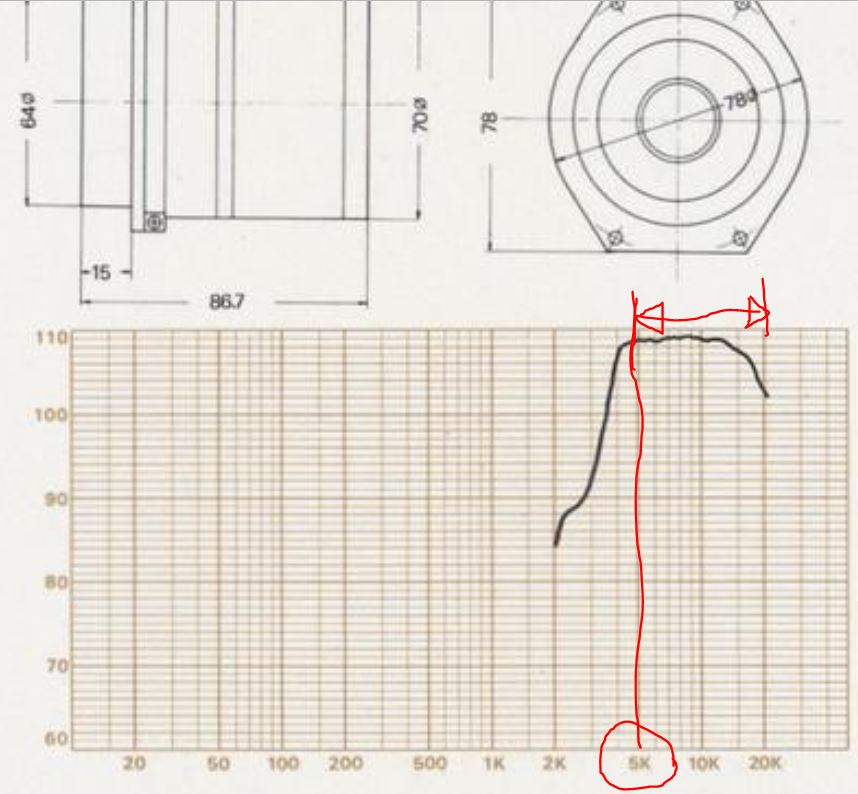
voy a recapitular: (o sea digo en voz alta lo que he entendido, disculpas si es muy repetitivo)
o sea, para permitir que el tweeter trabaje adecuadamente debo cortar la frecuencia con un filtro de paso alto, aparentemente para un tweeter se recomienda un filtro de segundo orden, lease aqui mejor que lo que yo pueda decir:
enlace: https://www.pcpaudio.com/pcpfiles/doc_altavoces/filtros_pasivos/filtrospasivos.html#filtros_lpad

aqui se recoge tambien lo que decia Dusan, que por dar errores de fase hay que invertir la polaridad, bien
bien, ¿y por que me he decidido a cortar a 5000Hz?, pues porque veo que la curva del Tweeter es fantastica a partir de 5000Hz, y no quiero desperdiciarlo (espero que mi idea sea correcta)

aqui se ve mejor:

Última edición por dequincey el Lun 31 Dic 2018 - 9:28, editado 1 vez
dequincey- Cantidad de envíos : 84
Localización : bio
Fecha de inscripción : 16/12/2018
 Re: Yamaha NS20 y NS30
Re: Yamaha NS20 y NS30
dicho esto, vamos con la atenuacion, el L-Pad, aqui esta explicado:

entonces como dije antes si pretendo trabajar sobre la mitad del sensitivity gap entre el tweeter 115dB y el altavoz de graves 92dB, son: 11,5dB
por ello probare con un rango de atenuacion desde 3, hasta 15:
atenuacion resistencia1 resistencia2
3 dB 2,34 19,39
6 dB 3,99 8,03
9 dB 5,16 4,39
12 dB 5,99 2,68
15 dB 6,57 1,73

entonces como dije antes si pretendo trabajar sobre la mitad del sensitivity gap entre el tweeter 115dB y el altavoz de graves 92dB, son: 11,5dB
por ello probare con un rango de atenuacion desde 3, hasta 15:
atenuacion resistencia1 resistencia2
3 dB 2,34 19,39
6 dB 3,99 8,03
9 dB 5,16 4,39
12 dB 5,99 2,68
15 dB 6,57 1,73
dequincey- Cantidad de envíos : 84
Localización : bio
Fecha de inscripción : 16/12/2018
 Re: Yamaha NS20 y NS30
Re: Yamaha NS20 y NS30
bien una vez revisado la disponibilidad de componentes, tengo:
filtro paso ALTO 5000Hz.
C= 2,7 uF
L= 0,33 mH
atenuacion resistencia1 resistencia2
3 dB 2,2 18
6 dB 3,9 8,2
9 dB 4,7 3,9
12 dB 5,6 2,7
15 dB 6,8 1,8
voy a pedirlos, seguire cuando los tenga,...
gracias
filtro paso ALTO 5000Hz.
C= 2,7 uF
L= 0,33 mH
atenuacion resistencia1 resistencia2
3 dB 2,2 18
6 dB 3,9 8,2
9 dB 4,7 3,9
12 dB 5,6 2,7
15 dB 6,8 1,8
voy a pedirlos, seguire cuando los tenga,...
gracias
dequincey- Cantidad de envíos : 84
Localización : bio
Fecha de inscripción : 16/12/2018
dequincey- Cantidad de envíos : 84
Localización : bio
Fecha de inscripción : 16/12/2018
 Re: Yamaha NS20 y NS30
Re: Yamaha NS20 y NS30
bueno, bueno, pues a la espera de que me lleguen los dos l-pad de fostex desde canada he hecho algunas averiguaciones
la primera ha sido que los tweeters actuales no proporcionan una respuesta adecuada, trabajan en el rango de los 95 dBs, dan una curva muy poco armonica que se trunca abruptamente en torno a 17000Hz
es decir, mantenerlos no tena mucho sentido
asi que, sustituyo los tweeter actuales por los ja0506, directamente
impresionantes, una claridad, limpieza, nitidez de agudos, espectacular,

problema, son ensordecedores, los 115dB son matadores
asi que con lo que tengo a mano me da para probar una atenuacion de 8dB a la espera del L-pad

la primera ha sido que los tweeters actuales no proporcionan una respuesta adecuada, trabajan en el rango de los 95 dBs, dan una curva muy poco armonica que se trunca abruptamente en torno a 17000Hz
es decir, mantenerlos no tena mucho sentido
asi que, sustituyo los tweeter actuales por los ja0506, directamente
impresionantes, una claridad, limpieza, nitidez de agudos, espectacular,

problema, son ensordecedores, los 115dB son matadores
asi que con lo que tengo a mano me da para probar una atenuacion de 8dB a la espera del L-pad

dequincey- Cantidad de envíos : 84
Localización : bio
Fecha de inscripción : 16/12/2018
dequincey- Cantidad de envíos : 84
Localización : bio
Fecha de inscripción : 16/12/2018
 Re: Yamaha NS20 y NS30
Re: Yamaha NS20 y NS30
me lo quedo asi,
a falta de recibir los l-pad
he estado haciendo de carpintero un ratillo
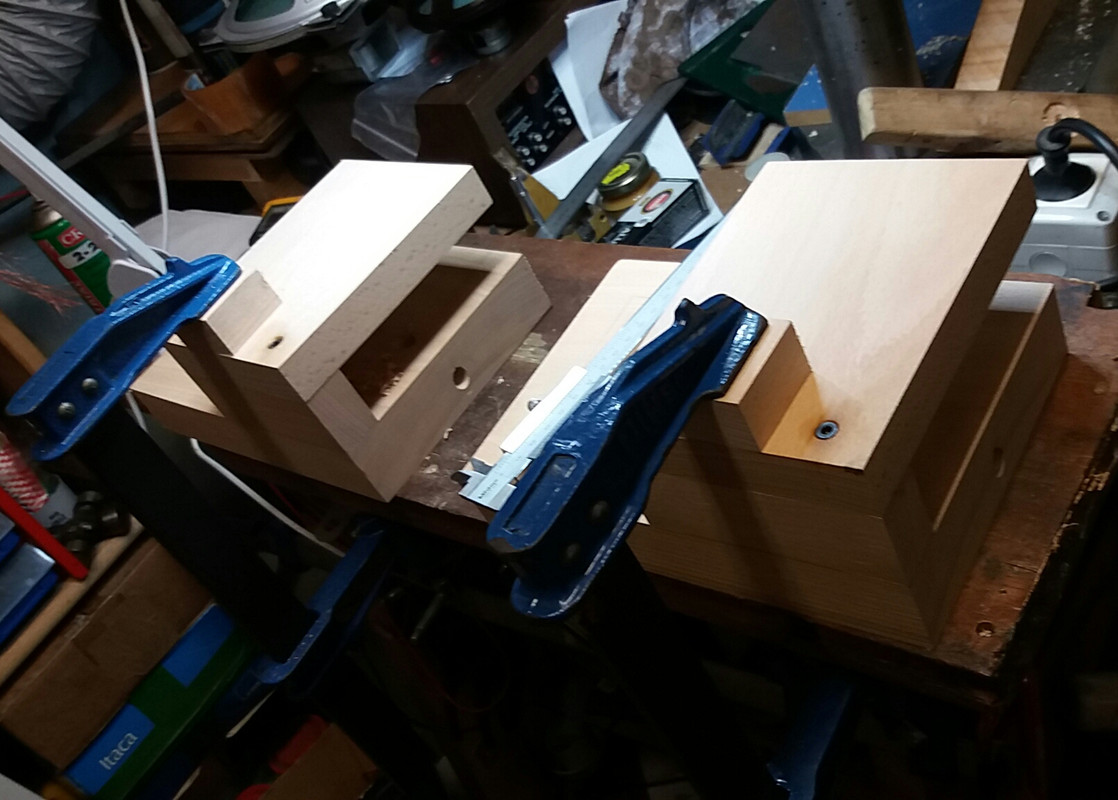
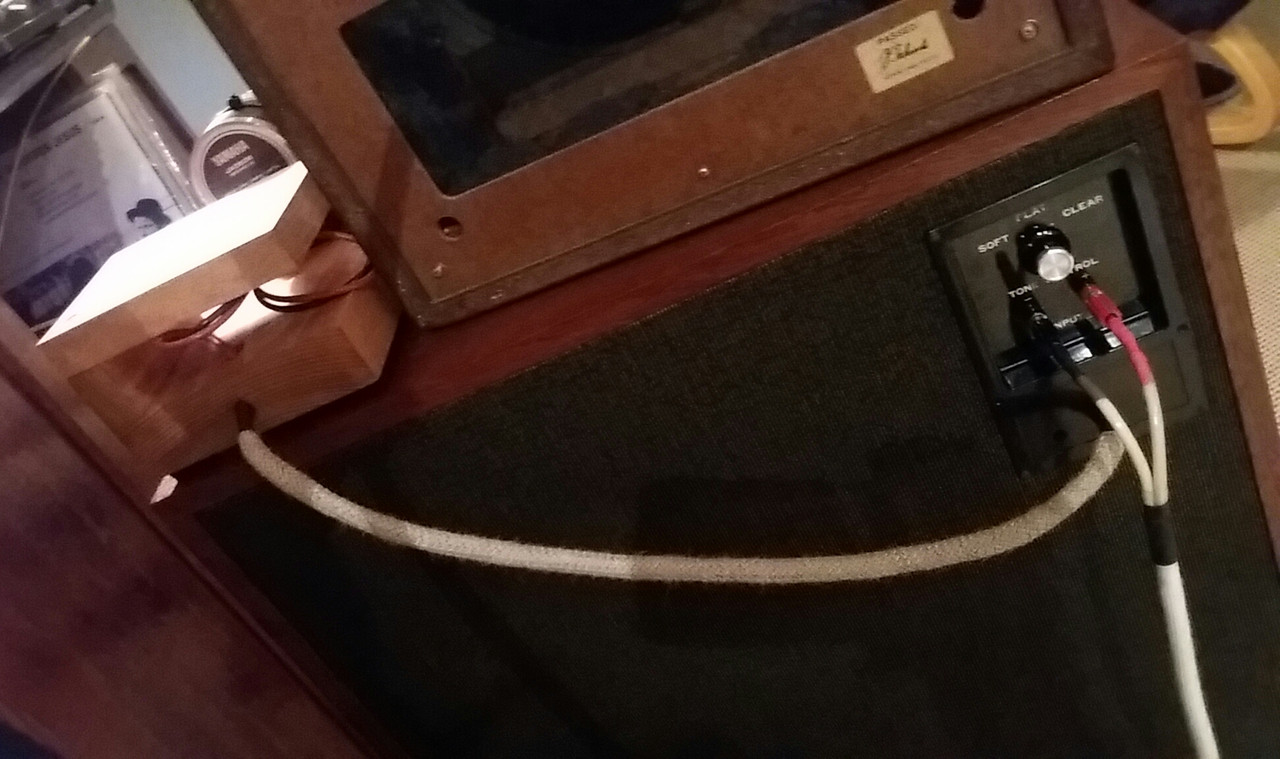

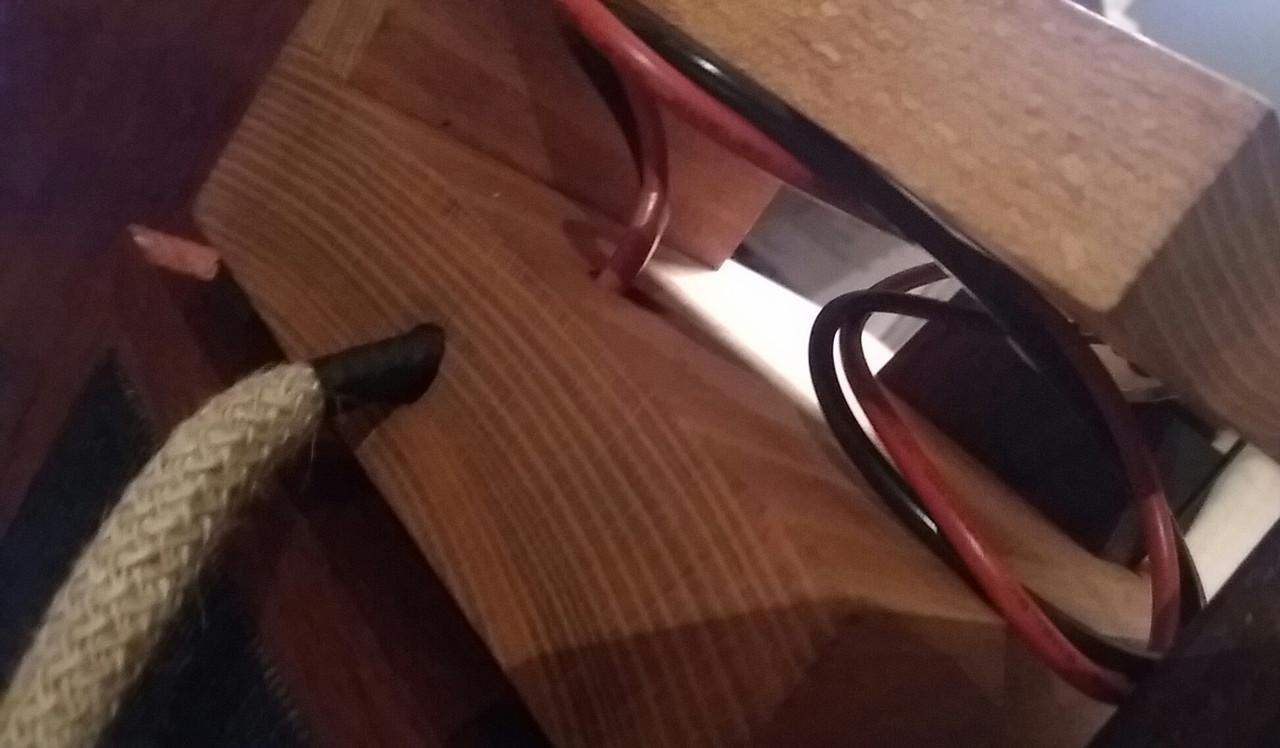
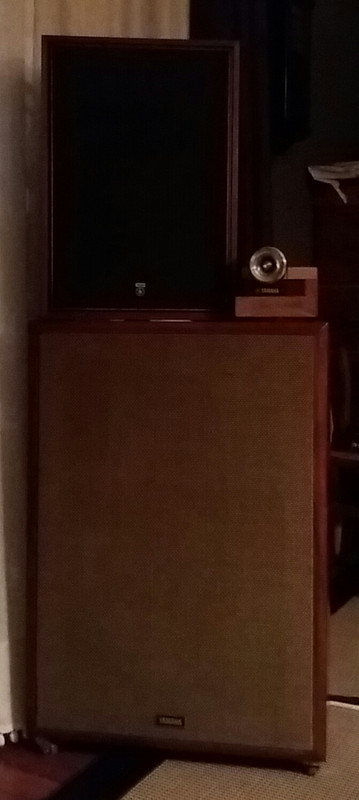
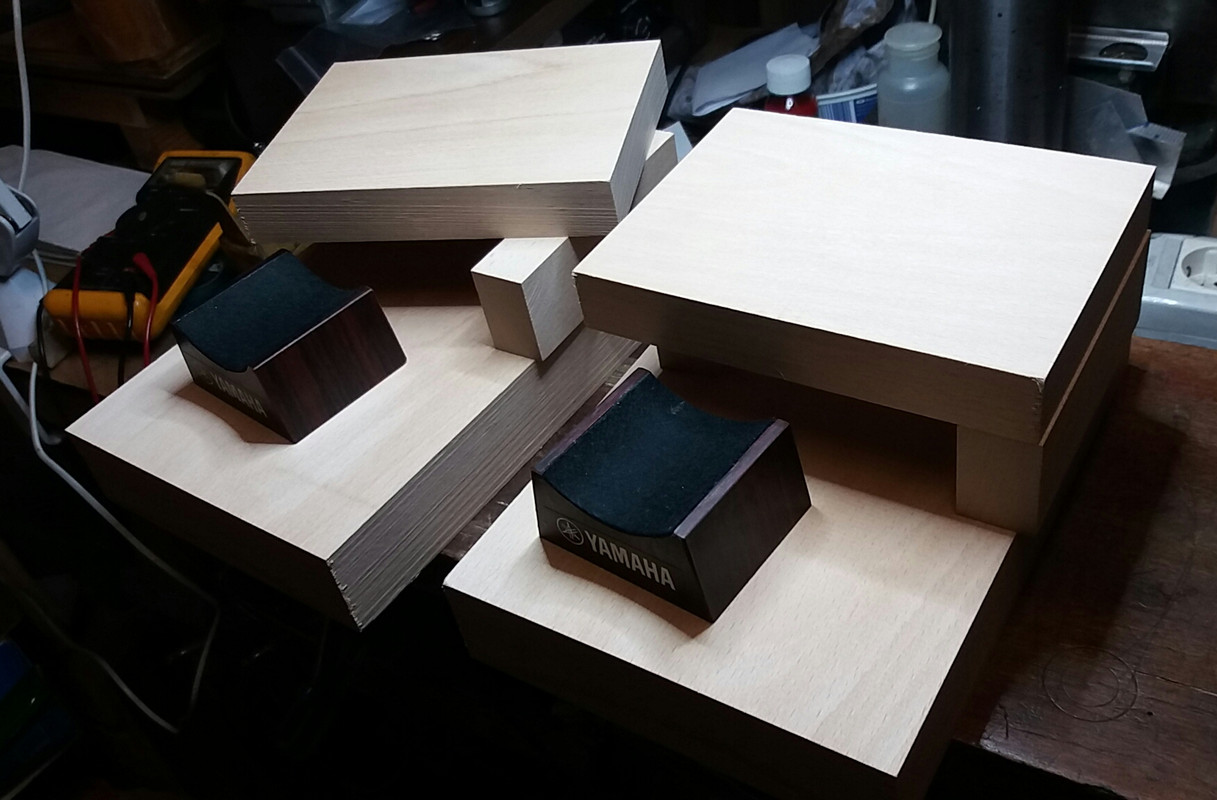
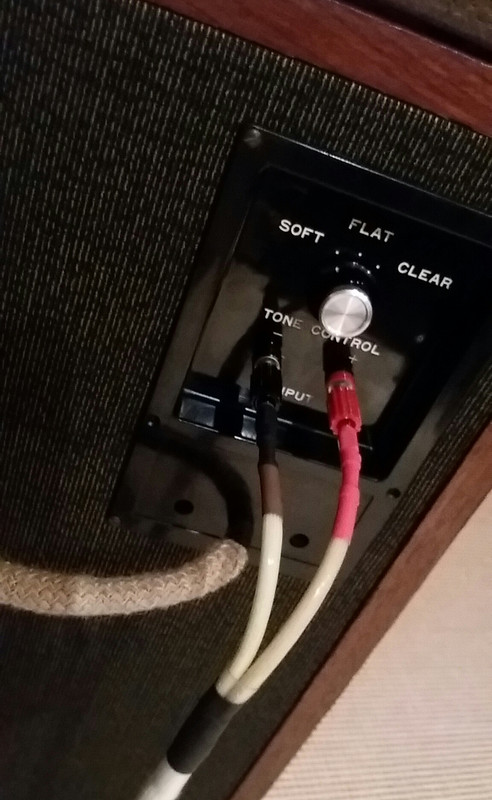

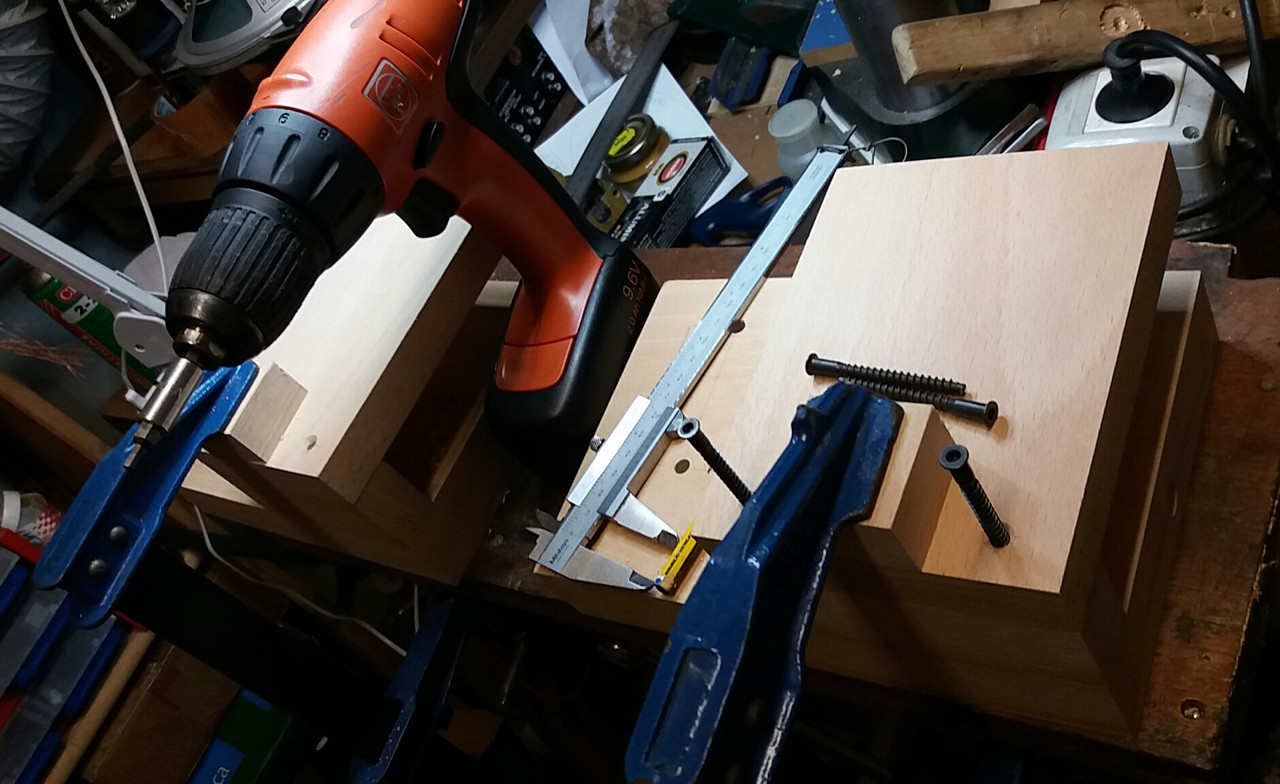
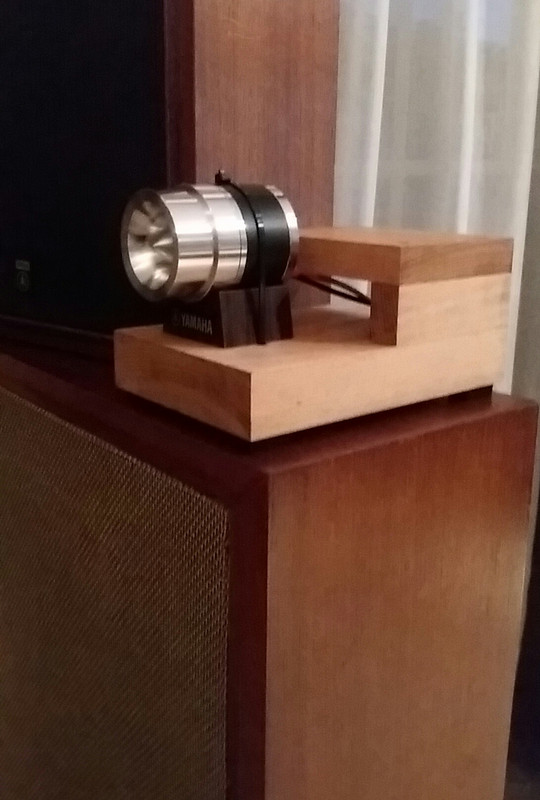
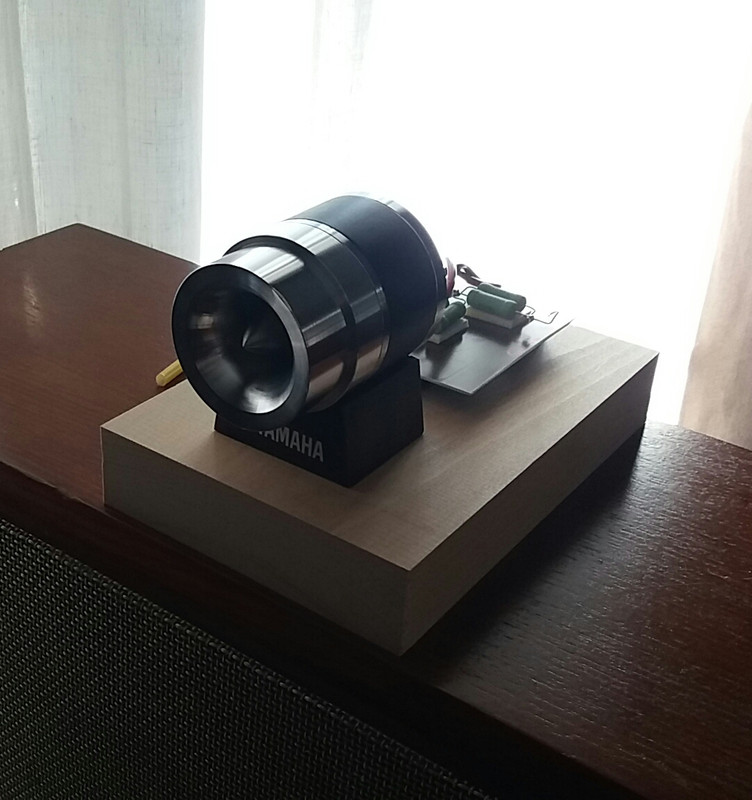


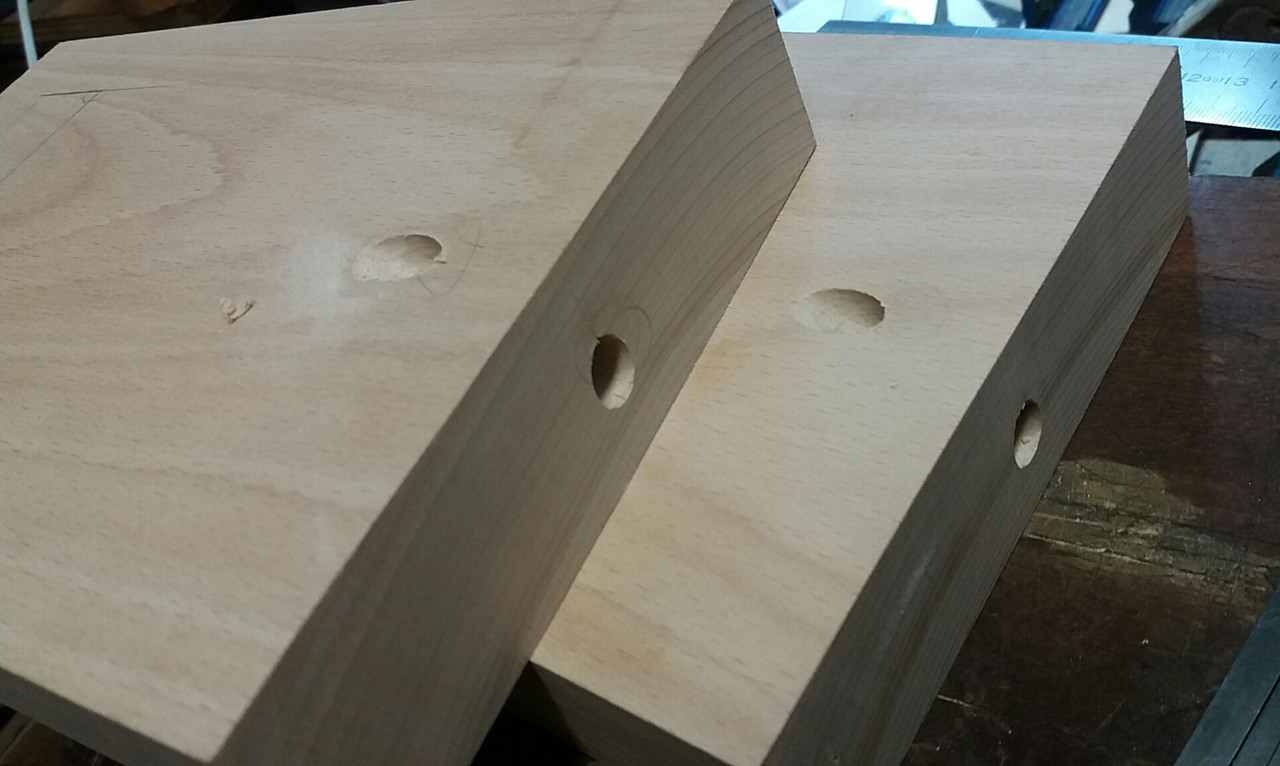
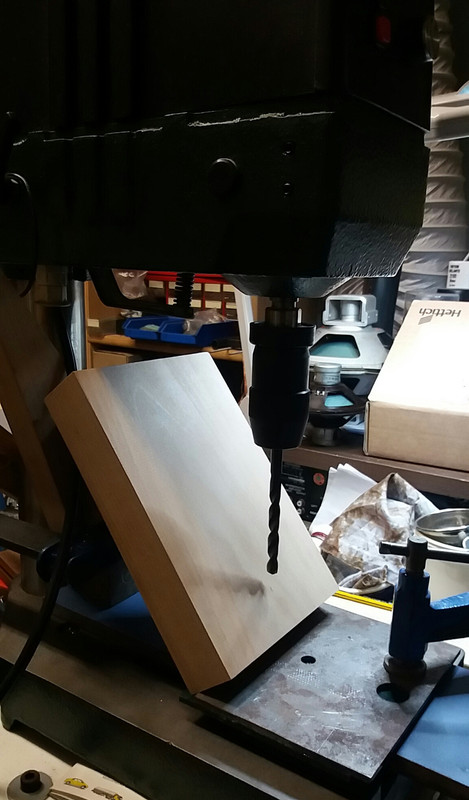

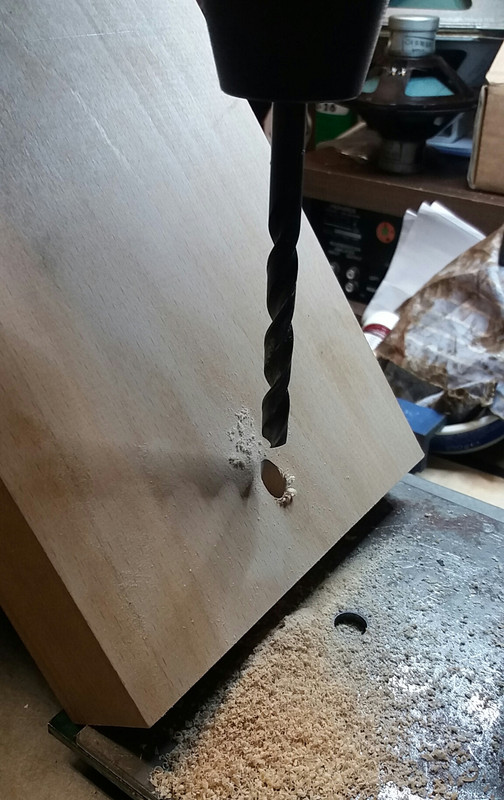
a falta de recibir los l-pad
he estado haciendo de carpintero un ratillo

















dequincey- Cantidad de envíos : 84
Localización : bio
Fecha de inscripción : 16/12/2018
Página 3 de 4. •  1, 2, 3, 4
1, 2, 3, 4 
 Temas similares
Temas similares» Duda entre etapa PRO Yamaha PC9501N, Yamaha PC6501N o o dos Yamaha P5000S para amplificar dos KEF Reference 207/2.
» YAMAHA AS3000 vs YAMAHA CENTENNIAL CX Y MX 10000 vs YAMAHA PX 5
» Elegir entre Marantz SR4600 y Yamaha RX-V659 y Yamaha RX-V650
» Diferencias entre Amplificador Yamaha A-S2000; AS-201 y AS-301
» Altavoces Yamaha NS 555 ó Yamaha NSF 330
» YAMAHA AS3000 vs YAMAHA CENTENNIAL CX Y MX 10000 vs YAMAHA PX 5
» Elegir entre Marantz SR4600 y Yamaha RX-V659 y Yamaha RX-V650
» Diferencias entre Amplificador Yamaha A-S2000; AS-201 y AS-301
» Altavoces Yamaha NS 555 ó Yamaha NSF 330
Página 3 de 4.
Permisos de este foro:
No puedes responder a temas en este foro.
 Índice
Índice Registrarse
Registrarse Conectarse
Conectarse






